Portocolom (often also written Porto Colom) is situated in the southeast of Mallorca and is considered one of the island’s most beautiful natural harbors. Colorful boathouses and cottages line the shores closely. In the past, this place served as the port of Felanitx. There’s a popular tale that Christopher Columbus was born here. However, Portocolom doesn’t rely on such stories. Away from the tourist hustle and bustle, it’s a peaceful place where you can explore the old Mallorca at many corners.
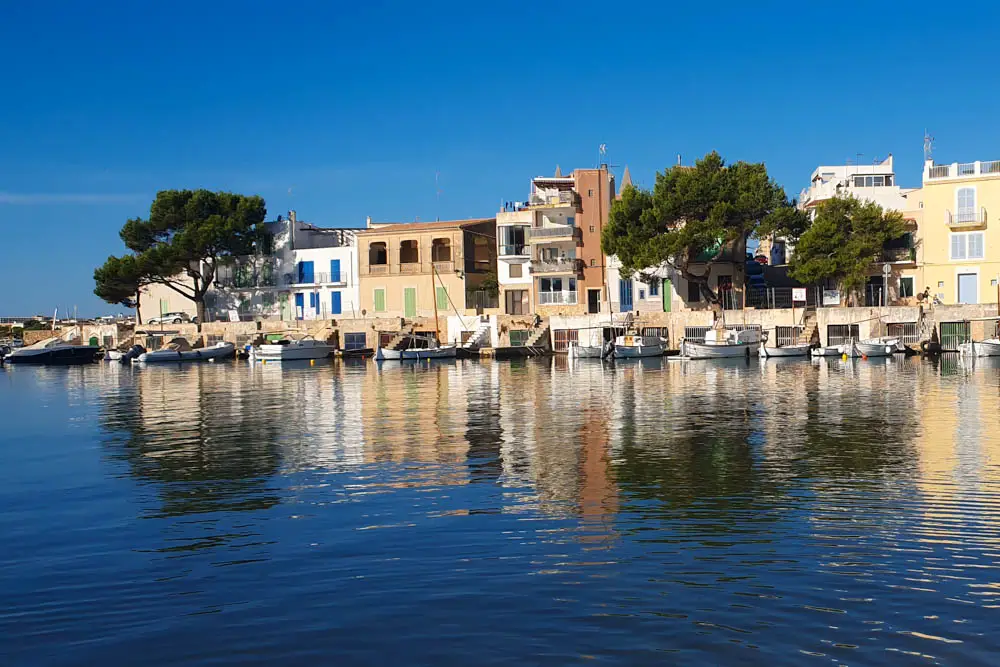
Transparency note: Some links in this post may lead to external booking opportunities. If a purchase is made, we receive a small commission. The price does not change for you.
There’s a story that suggests the name Portocolom is linked to the sailor Christopher Columbus. Some historians claim that the discoverer of America was born in Felanitx (to which the port belongs). Evidence often points to the name, as Columbus is referred to as Colón (in Spanish) or Colom (in Catalan) in Mallorca. However, nobody is entirely certain. Regardless of whether the famous navigator began his sea voyages from Portocolom or not, the harbor town is worth a visit for many reasons.
9 Things to Do in Portocolom
Portocolom is too small to boast typical tourist attractions. The real charm lies in its quaint corners, brightly colored houses, and fishing boats gently bobbing in the sea. However, when you visit this harbor town, you shouldn’t miss these nine spots.
Plaza Sant Jaume and Church of Our Lady
The central square and the adjacent church form the heart of the old fishing quarter, known as Es Riuetó. Here, colorful houses line the streets, featuring characteristic small doors and windows, and many interesting details on the facades. A walk through the narrow streets is a must.
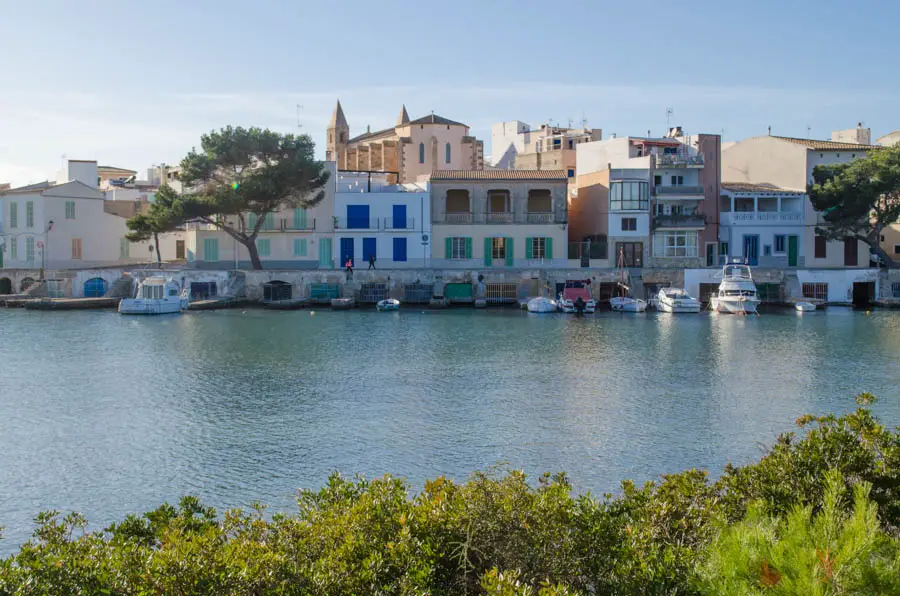
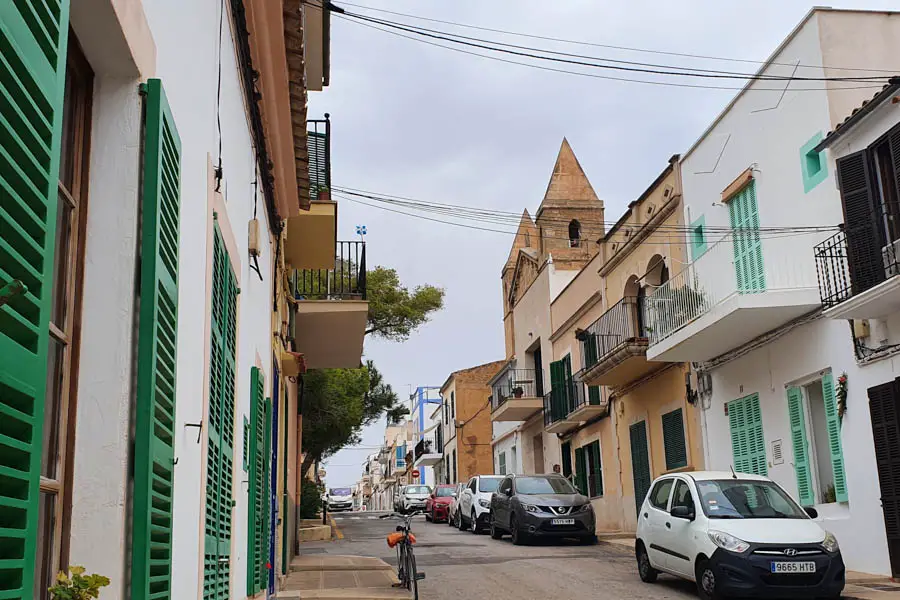
The Church of Madre de Dios del Carmen is located in the center of the old fishing quarter, slightly elevated above the harbor. It was built in the Gothic style between 1884 and 1887. The most notable features are the stained glass windows. Otherwise, the brick structure is rather simple.
Stroll by the Sea: Carrer de la Mar
Carrer de la Mar is the most visited and photographed street in Portocolom. Here, you get a characteristic view of the former fishing harbor. The pictures taken here are true postcard-worthy shots, featuring colorful houses with balconies on the first floor on one side and the sea with small boats on the other side.
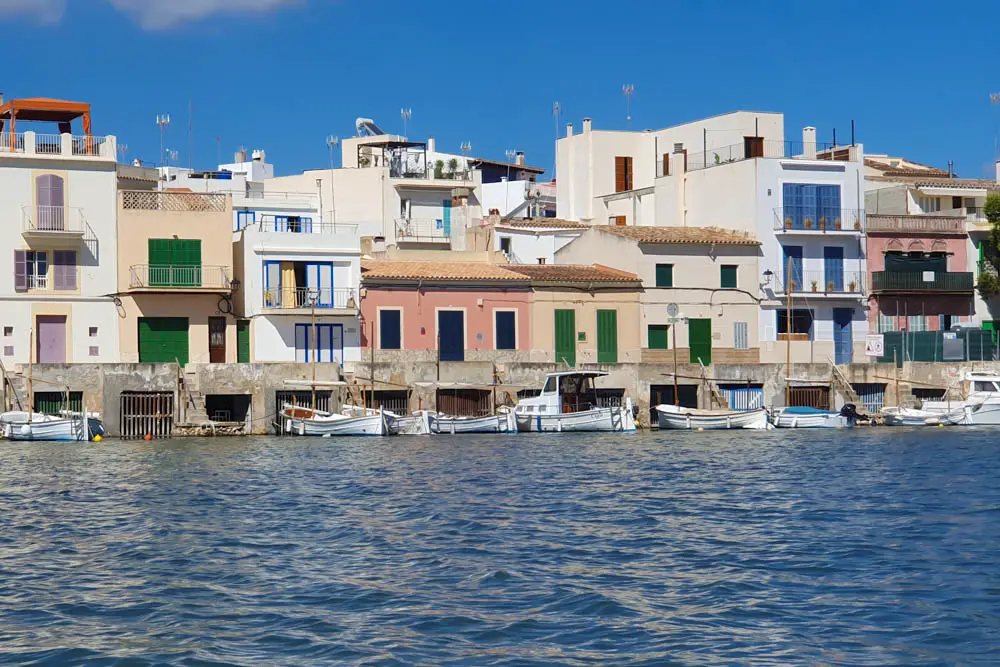
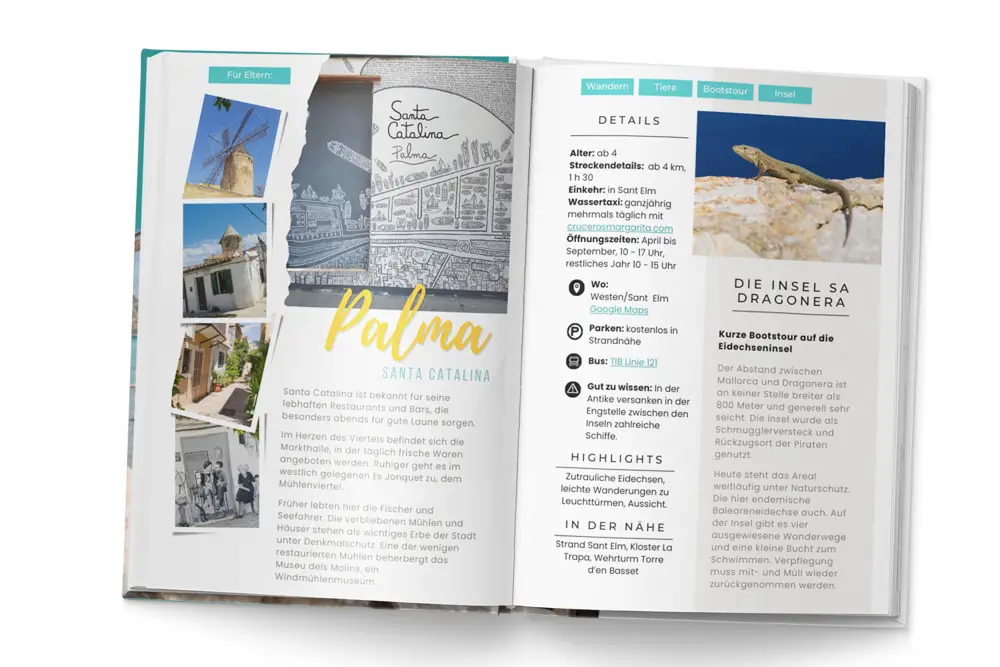
Du liebst diese Tipps?
Entdecke alle kinderfreundlichen Aktivitäten, Strände und exklusive Rabatte in meinem Mallorca-Guide.
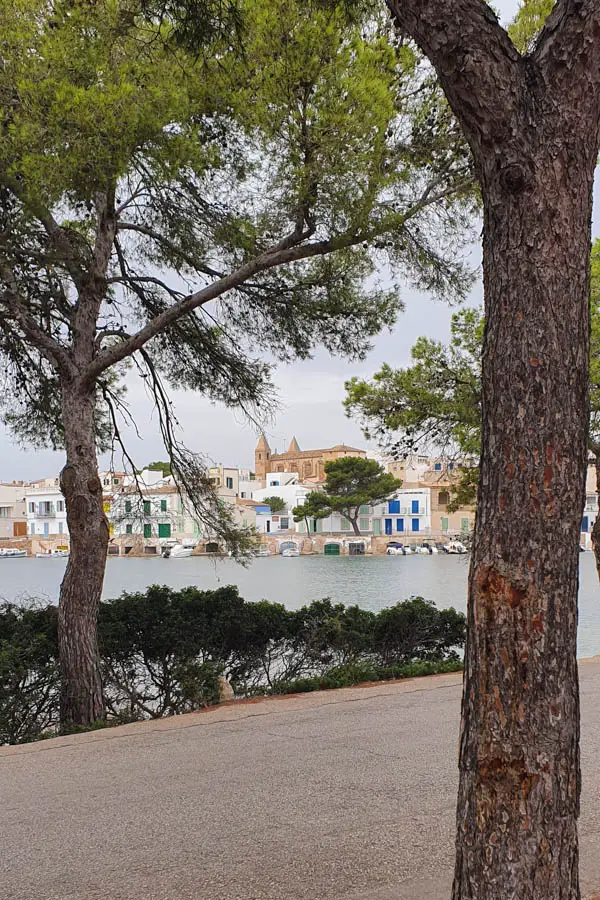
This area is especially appealing to parents. Right by the sea, there is a large, modern playground. Nearby, you’ll find plenty of parking spaces. If you only have time for a short stop, this is the place to be. From the playground, you have a view of the harbor. While the children climb on the pirate ship, parents can sit on benches and enjoy the sea view.
The Fishing Harbor of Portocolom
In the 19th century, Portocolom’s harbor played a crucial role in the island’s maritime trade. Today, its economic significance has waned, but a sense of its former grandeur lingers. While there are only a few professional fishermen left in town, you can still find nets laid out for drying and mending in some spots.
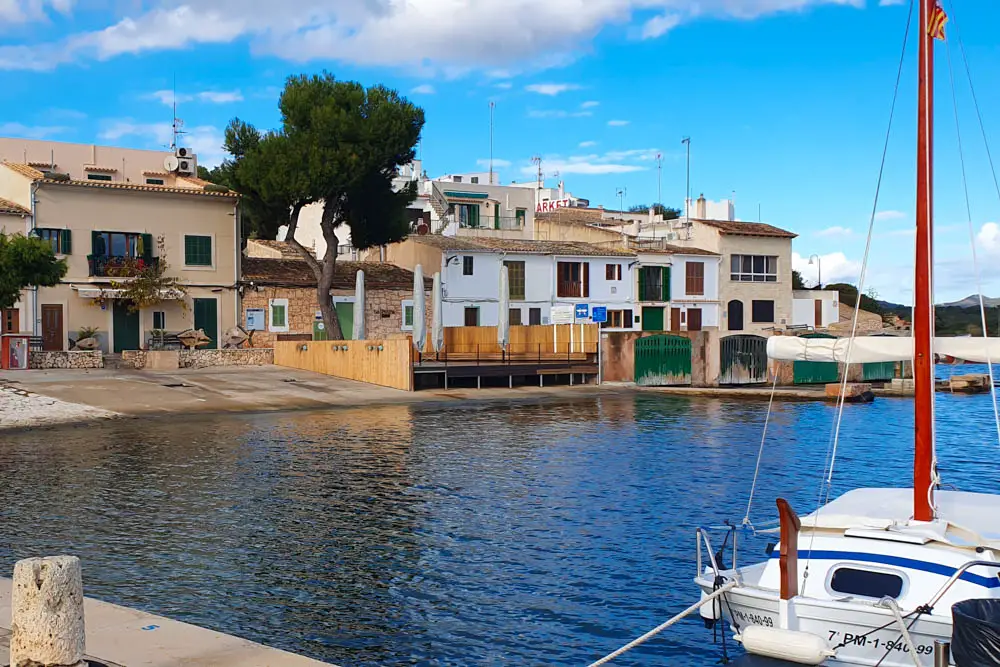
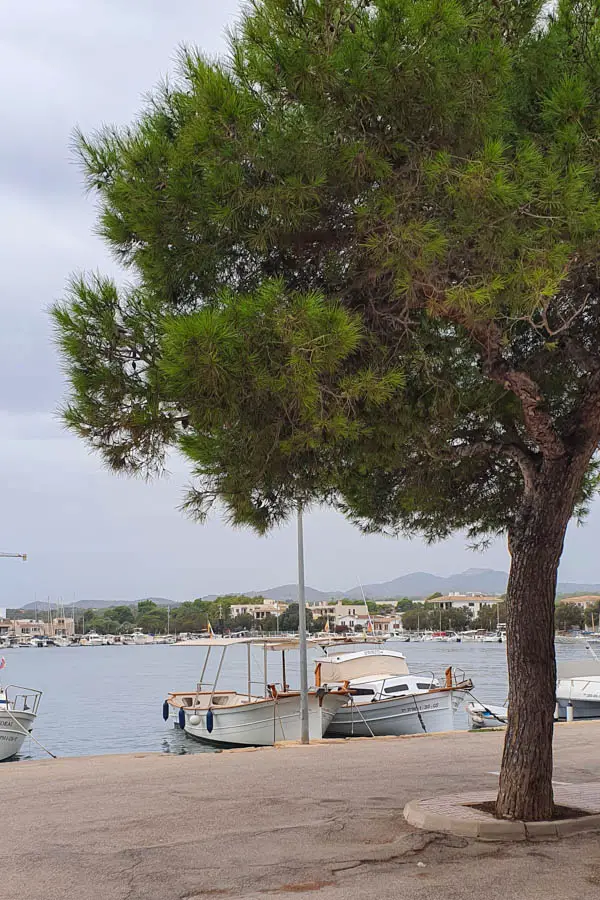
Don’t miss the chance to spot the traditional sailboats, known as “Llaüts,” scattered among the yachts. While fewer in number, they still maintain their presence in the harbor. Nowadays, many of them have been motorized and serve as excursion boats. Check out the section on “Boat Tours in Portocolom” for details on how to join a trip on one of these classic vessels.
Scenic Viewpoint at Carrer del Far
Carrer del Far is the street that leads from the harbor in Portocolom to the lighthouse. I’ll introduce it again later on because it’s perfect for leisurely strolls and walks with a stroller.
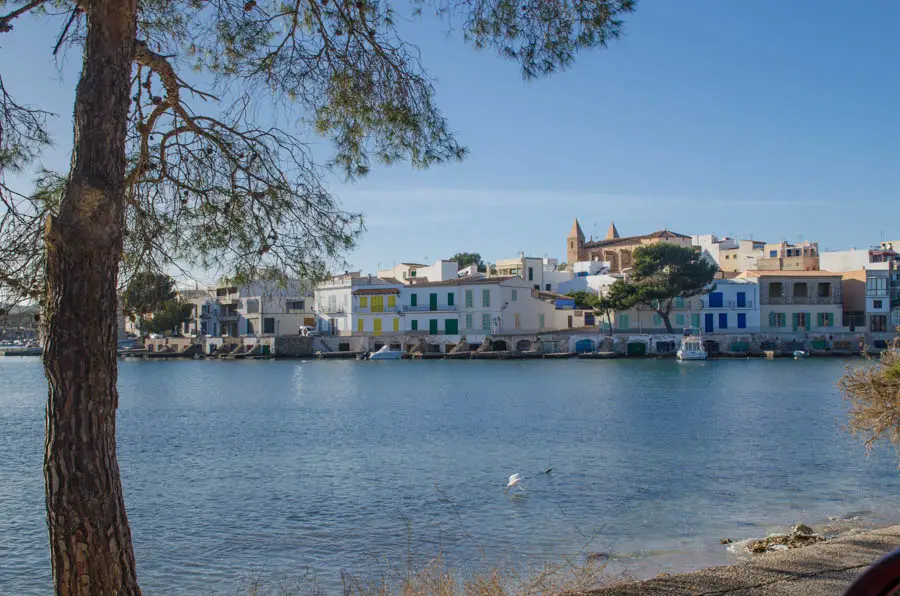
Right at the beginning of this street, there is another parking lot. Just behind it, a small staircase leads to a wooden path. If you walk a short distance, you’ll reach a picnic table. From here, you can overlook the water, the boat garages, and the houses beyond. Another very picturesque scene, especially at sunset.
The Lighthouse of Portocolom
The lighthouse at the northeastern end of the harbor is the flagship of the fishing village. It stands 42 meters above the sea at the end of the cliff called Sa Punta. Built in 1863, it underwent renovations in 1918 and 1965, during which the tower was first raised and then lowered back down.
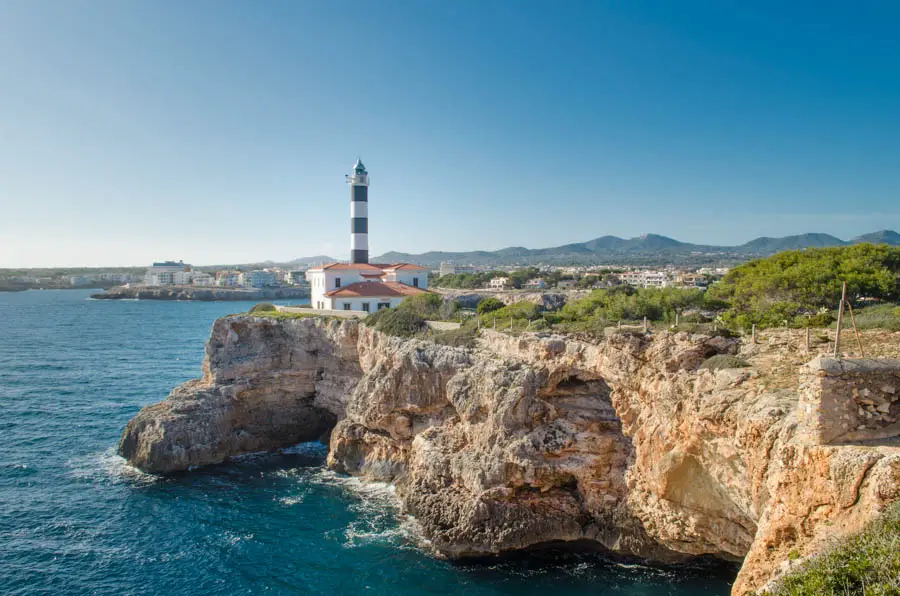
The tower is one of the most photographed lighthouses in Mallorca. For 150 years, it has guided sailors to the safe harbor. Theoretically, one could see every point in the Portocolom harbor from the lighthouse. However, the area around the tower is fenced off, so this is not possible.
Although this part of the coast was considered one of the quieter sections in the island’s rough past, there have been some episodes of drama. Twice within a year, Llaüts went under. In 1882, the lighthouse keeper rescued a ship and helped recover the crew. And in November 1937, during the Civil War, the lighthouse was occupied by a garrison of German soldiers.
The Cave Sa Cova Foradada
If you look around on social media, you’ll regularly come across a photo motif when it comes to Portocolom. The lighthouse photographed through a cave. Or above an imposing stone arch. That’s the cave Sa Cova Foradada, the cave with a hole. It’s located at the end of the eastern peninsula and is relatively easy to reach.
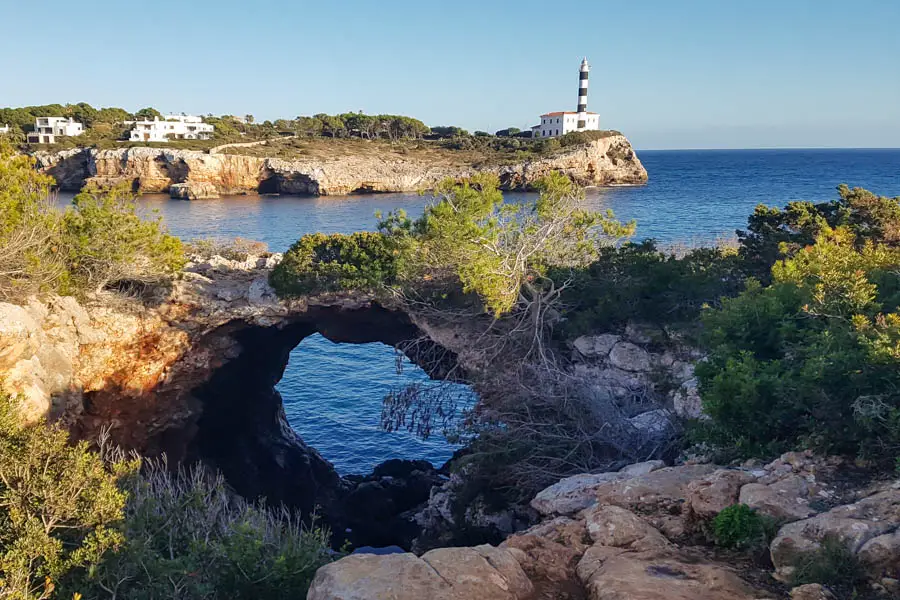
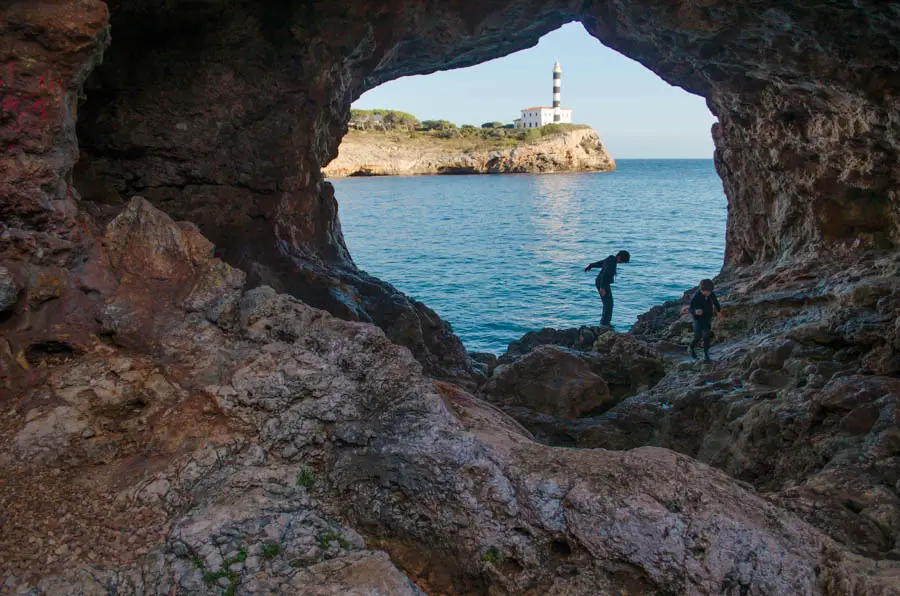
Parts of the cave have collapsed, leading to the formation of the natural monument. From the road, a footpath leads to the coast. You can climb down to the remains of the cave, provided the sea isn’t too rough and waves aren’t splashing into the cave. Alternatively, you can also walk along the arch. It’s wider than it appears at first glance.
Walk through the Harbour
A stroll through the entire port of Portocolom can turn into a full-day outing with children. However, it’s also possible to walk only certain sections. The total distance, from the lighthouse in the west to the stone arch in the east, is just over 5 kilometers. It takes about 50 minutes to cover this distance, but with children, it will likely take longer.
The most convenient option is to park at the old fishing quarter parking lot. From there, you can first walk along the wooden path to the beaches and the lighthouse. The last section follows the road. However, the traffic is not excessive.
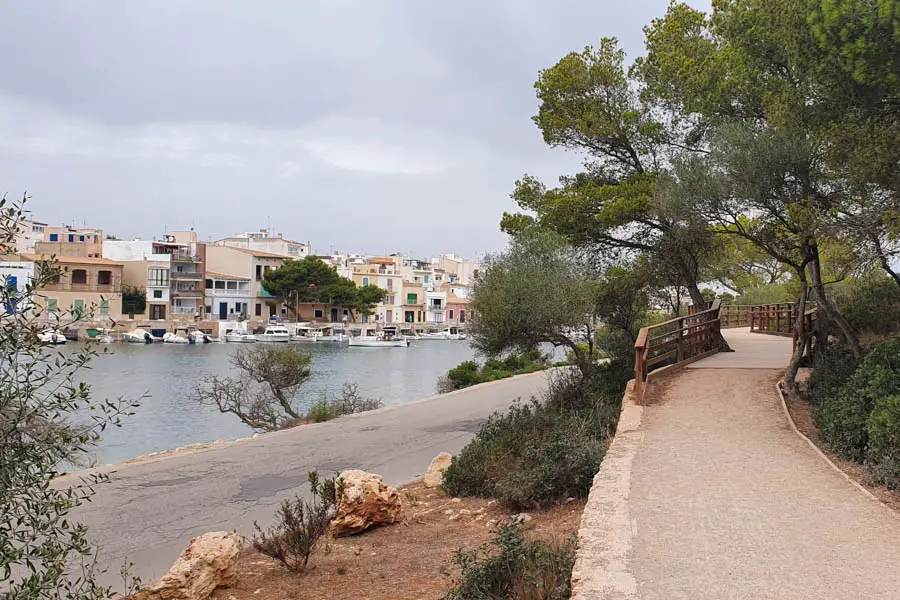
Heading in the other direction, you’ll pass through the fishing quarter and along the boat garages. Right next to it is a small playground with a climbing ship and some other play equipment. The play area is fenced off, and there are benches for parents overlooking the sea.
If the kids start to tire out, you can end the tour here. You’ve already seen the most important parts of Portocolom. On the other side of the harbor, things get a bit livelier. The houses here are newer, there are more dining options, but also more traffic.
Along the way, you’ll come across small rocky coves and moorings that locals use for a dip in the water. However, they can’t quite compare to the beaches on the other side of the harbor.
Boat Tours
As a harbor town, it’s only natural that boat tours are offered in Portocolom. The most affordable and straightforward excursion is operated by Starfish. The glass-bottom boat docks several times a day during the peak season at the Sa Duana pier in the western part of the harbor, taking you to Cala d’Or, the Mondragó Natural Park, and the fishing village of Cala Figuera. You can check the times on the posted schedules.
Additionally, there are more classic boat excursions available. I’ve already mentioned the traditional Llaüts. They can be booked for up to 3.5 hours, accommodating a maximum of six people on these small sailing boats. The trips take you to small, hidden coves nearby, with swim stops and drinks included.
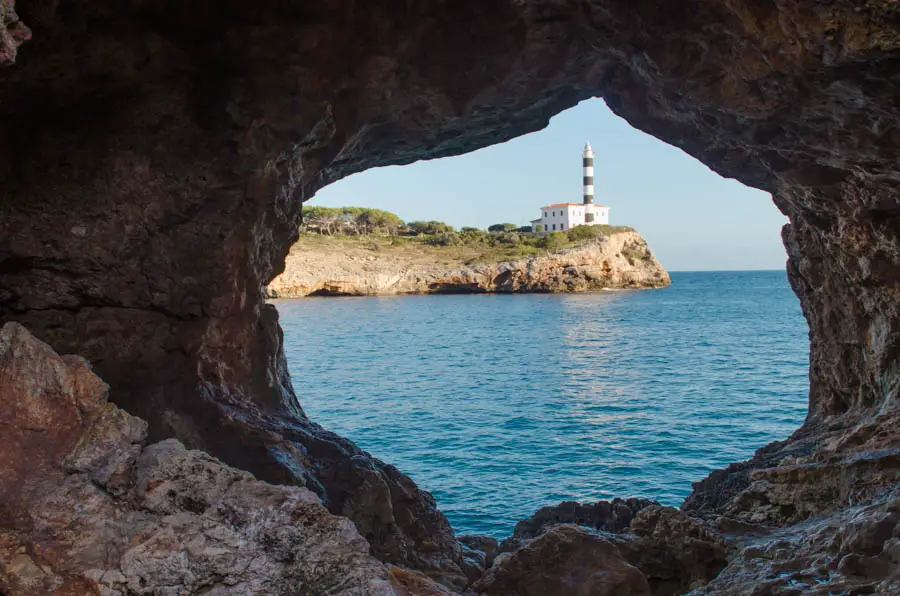
Another option is this snorkeling boat tour with barbecue, which takes you to secluded coves in a wooden boat. Up to 12 people can join the half-day tour, which lasts four hours. Children up to 3 years old ride for free.
Stand-up Paddleboarding through the Harbor
We love exploring hidden spots and caves from the sea, and the cave in Portocolom is perfect for that. There’s a kayak and surfboard rental in the harbor. The harbor is quite large, so even just navigating it once makes for a pretty long tour. The water here is always very calm due to the narrow opening to the sea, making it ideal for trying out stand-up paddleboarding.
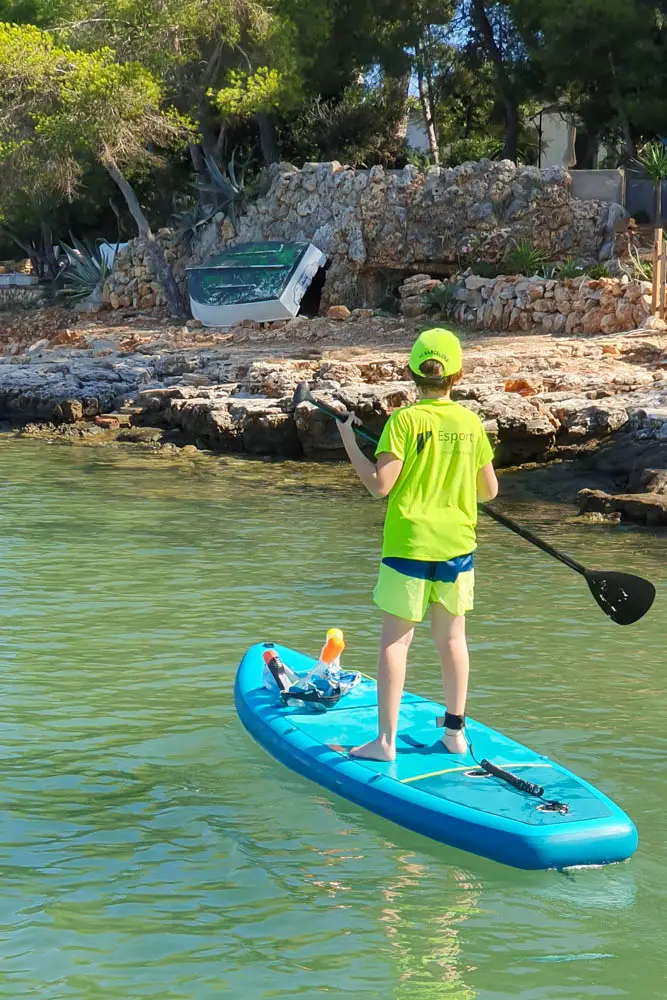
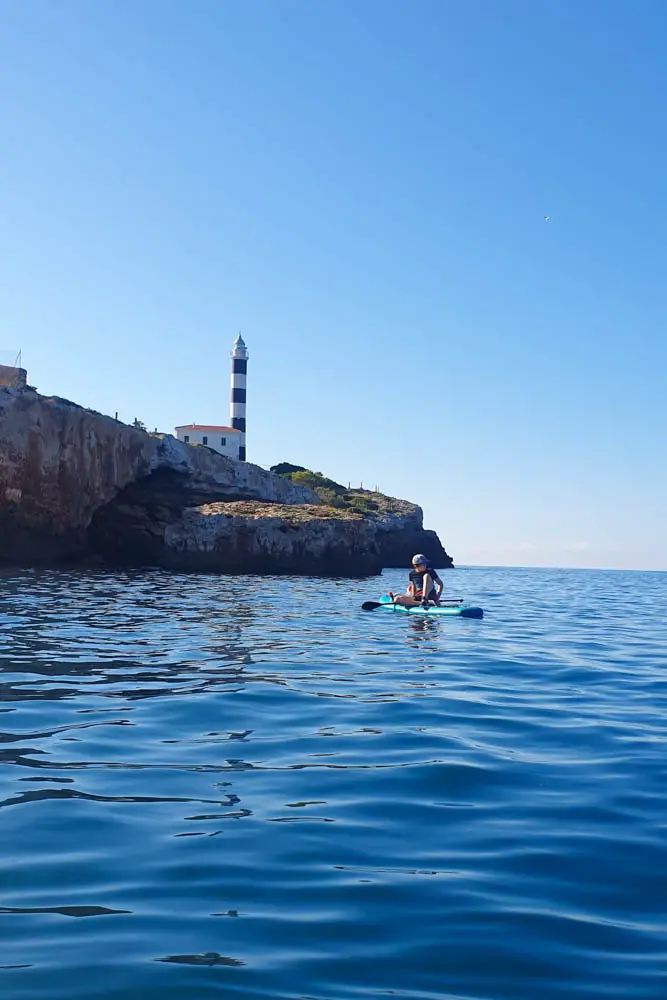
One downside: the boat traffic. Especially on weekends, there’s a constant stream of boats coming and going. But as long as you stick to the coastline and don’t try to cross from one side to the other, it’s manageable even with children.
All Beaches in Portocolom
Unlike other coastal towns and former fishing villages, Portocolom has so far been spared from excessive crowds. This is mainly because there isn’t a really large beach in the harbor. However, you don’t have to miss out on swimming altogether. While snorkeling, you can also explore the two caves, Cova dels Ases and Cova dels Coloms.
Cala Marçal Beach
Cala Marçal (also Cala Marsal) is the main beach in Portocolom, although it’s actually located a bit outside the town. It stretches 150 meters in length and is 90 meters wide, offering calm, clear waters. Some tourist infrastructure has developed around the beach. Consequently, it can get quite crowded in the summer. However, the tourist center is relatively modest compared to other places.
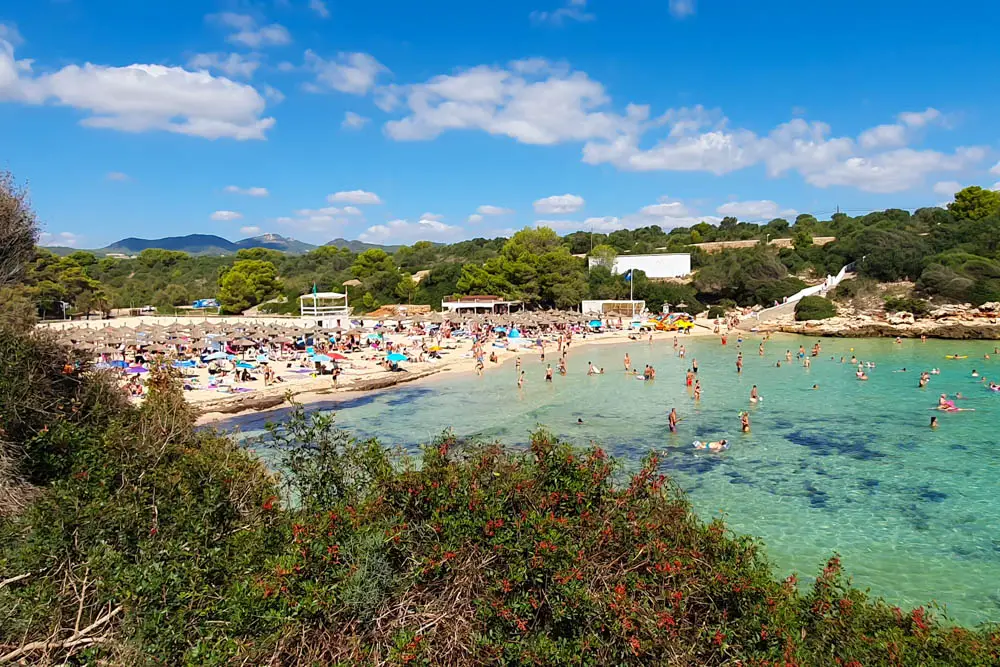
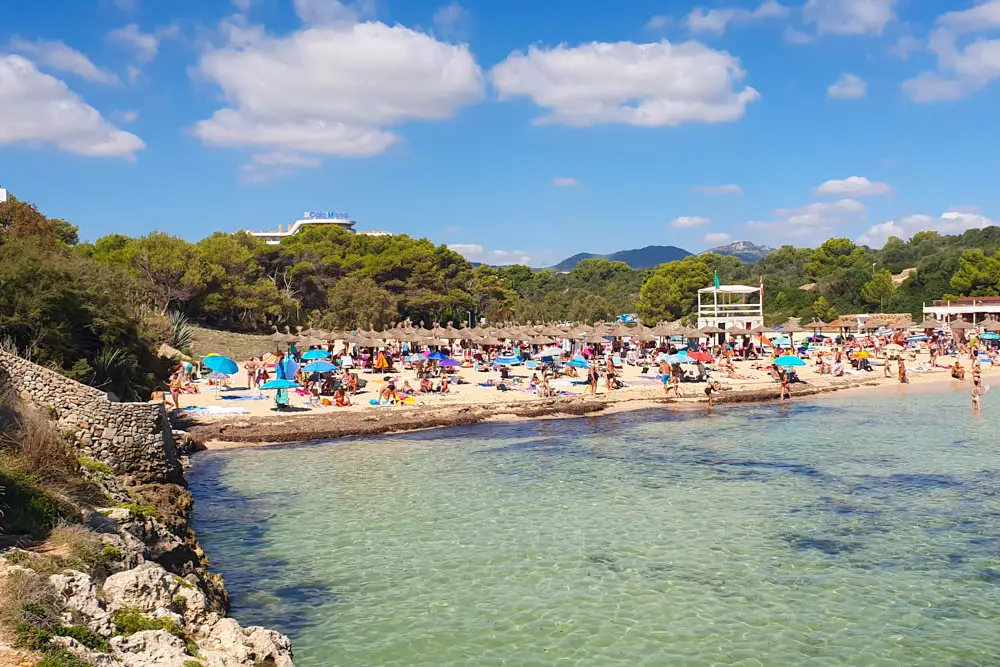
To pass the time, you can rent pedal boats at the beach. Nearby, there are opportunities for stand-up paddleboarding and diving. Behind the beach, there is a playground. Additionally, there’s a beach bar, a restaurant, and numerous shops along the promenade.
S’Arenal de Portocolom
Since only tourists are usually found at Cala Marçal, locals tend to flock to other spots. They can be found on the east side of the harbor, where a small sandy area interspersed with pebbles and rocks stretches out. The beach strip is rather narrow but lined with oddly shaped pine trees that provide shade.
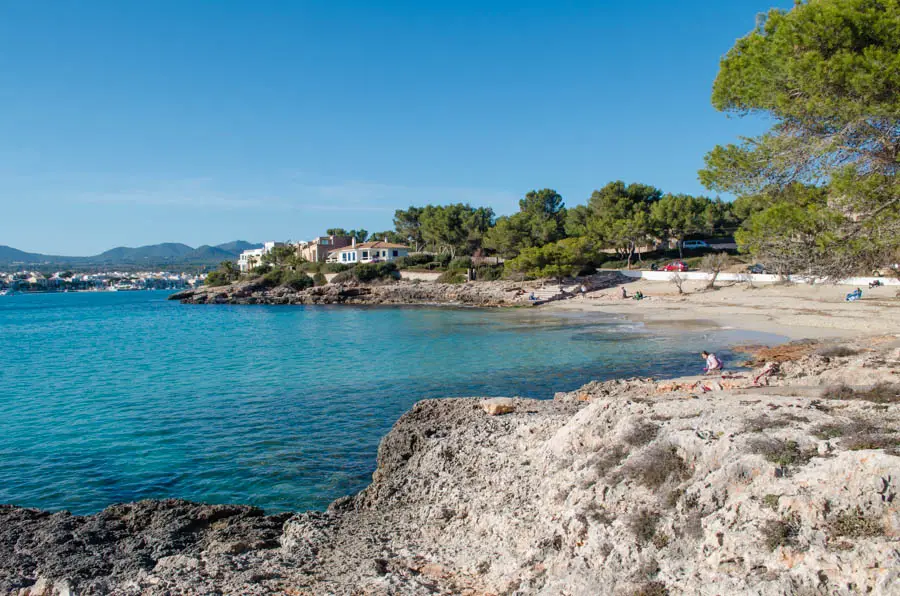
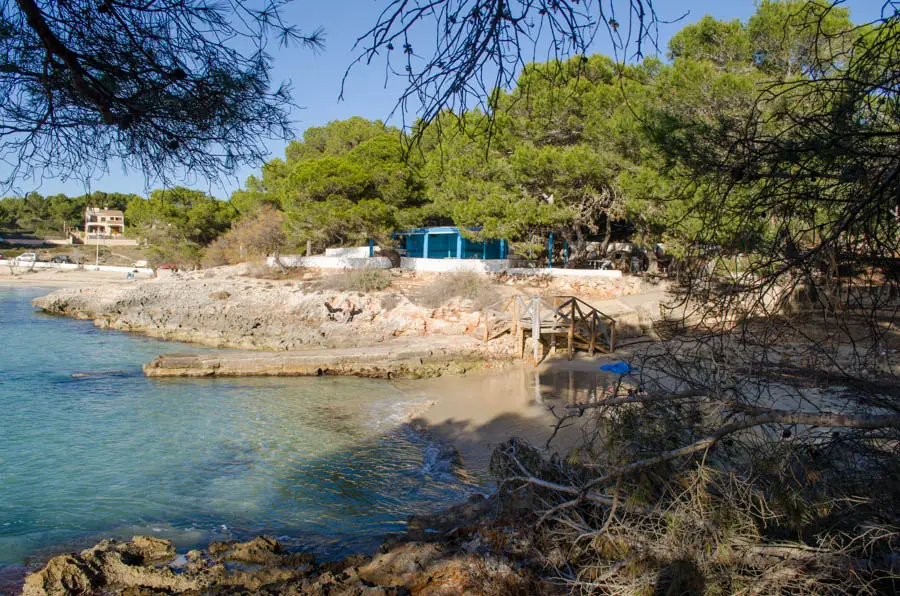
You won’t be completely without service at s’Arenal de Portocolom either. There’s a small beach bar and another establishment a bit higher up on the rocks. You can also rent sunbeds and umbrellas. The water is very shallow, making it perfect for children. Additionally, kids will love the floating island anchored offshore in the summer, featuring a slide and diving platforms.
If you continue north along the rocky promontory past the bar, you’ll reach a second, smaller sandy cove. Here, too, access to the sea is easy. The sandy area is a bit smaller, but there are stone benches where you can sit.
S’Arenal dets Ases
A bit further south, on the way back to the harbor, you’ll find this small bathing spot where, according to its name, the donkeys used to bathe. There’s no proper beach here; it’s more rocky. However, the spot is popular with locals, who set up their folding chairs in the shade of the trees and take a dip in the sea.
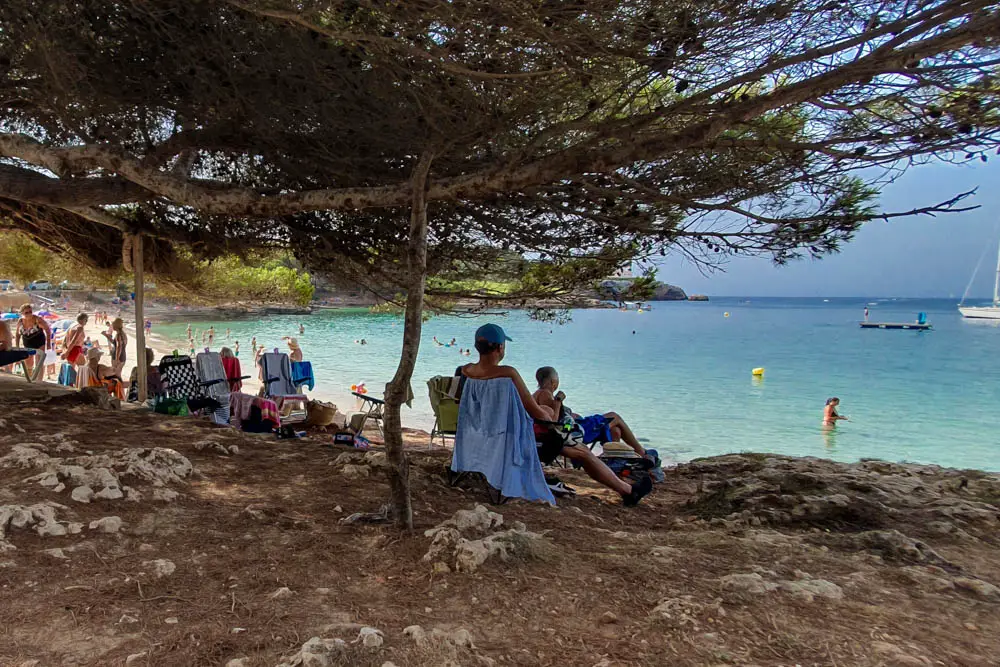
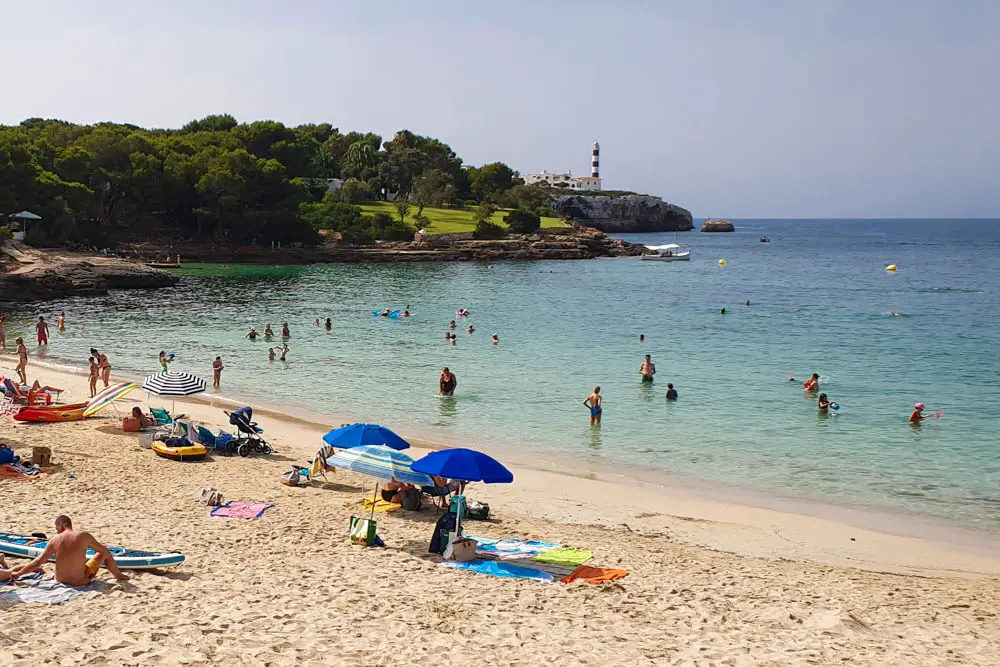
The spot isn’t quite as beautiful and idyllic as S’Arenal, partly because the road runs directly behind the beach. However, it’s still suitable for a quick swim stop.
S’Algar
Just outside of Portocolom lies a bay where you’ll find the S’Algar Beach. Primarily composed of stones and rocks, it’s covered with Neptune grass, known locally as “Alga,” although it’s not algae but a marine plant that filters water and converts carbon dioxide into oxygen.
In the past, farmers used this seagrass for fertilizing fields and as insulation material in house walls. However, it’s now prohibited to remove seagrass from the beach as a measure against climate change.
The seagrass also contributes to the formation of sandy areas between the otherwise rocky sections. Depending on the season, these sandy patches may shift or be completely covered by seagrass. Mostly frequented by locals, it’s a popular spot for swimming and snorkeling in Mallorca.
Due to increased visitor numbers, access to S’Algar Beach was closed last summer. While it’s possible to park near the beach, it’s better to use the designated parking lot in the harbor. From there, it’s about a 15-minute walk.
Pirates, Seafarers & Columbus: A Bit of History
According to ancient documents, Catalan merchants likely gave the port its name, Portocolom, during Muslim rule. It’s also probable that it existed during Roman times. The name doesn’t originate from Christopher Columbus (known as Cristófol Colón in Spanish), as some locals like to claim. Instead, it derives from the pigeons (Colom in Catalan) that were found here.
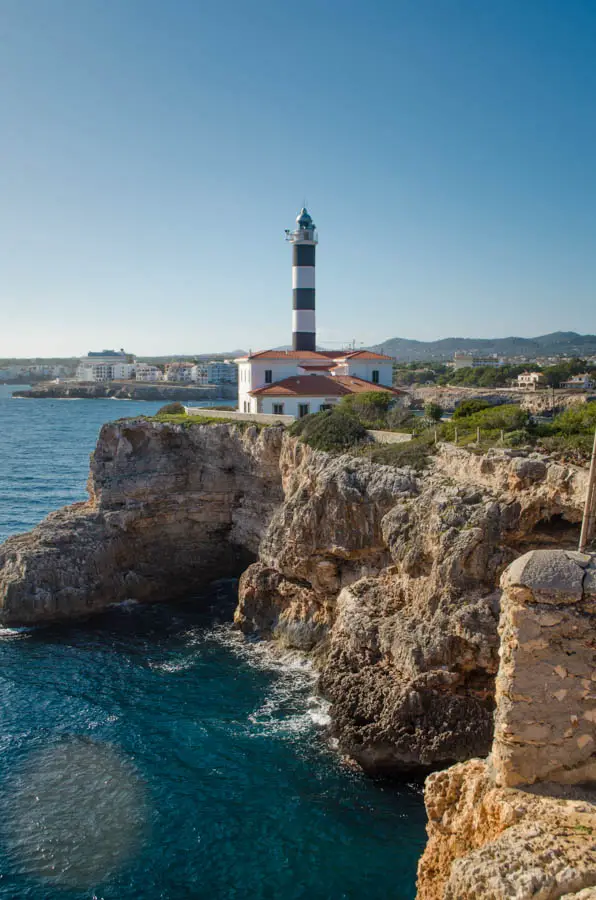
Shaped primarily by pirates who frequently raided Mallorca during the Middle Ages, the town saw the construction of a watchtower in the 16th century to spot potential attacks at the harbor entrance. Unfortunately, nothing of it remains today.
Economically, the region thrived on wine trade, reaching its peak in the 19th century. Growth of the town began in the previous century, resulting in the present-day historic core. However, the economic boom halted with the phylloxera crisis. From then on, the people of Portocolom primarily relied on fishing. With the advent of tourism in Mallorca from the 1960s, additional settlements emerged.
Getting there and Parking in Porto Colom
Getting to Portocolom isn’t overly complicated. On the road connecting Santanyí with Felanitx, you’ll find two turn-offs leading you into the harbor. The streets, especially in the old fisherman’s quarter, are somewhat narrow and winding, so it’s advisable to use one of the designated parking areas.
The most convenient and relatively central parking spot is the small parking lot at the old sailor’s quarter, in the eastern part of the harbor. Another option is the parking lot near the playground, although theoretically reserved for members of the yacht club.
Things o Do and See Nearby
Perhaps a visit to Portocolom might not fill your entire day? In that case, I have some recommendations for nearby excursions for you.
The small Town of Felanitx
Portocolom is administratively part of Felanitx and has always been the port of the small town inland. The town is primarily known for its monastery. However, the town center is also very charming. In addition to the impressive church, there is a market hall and an underground well.
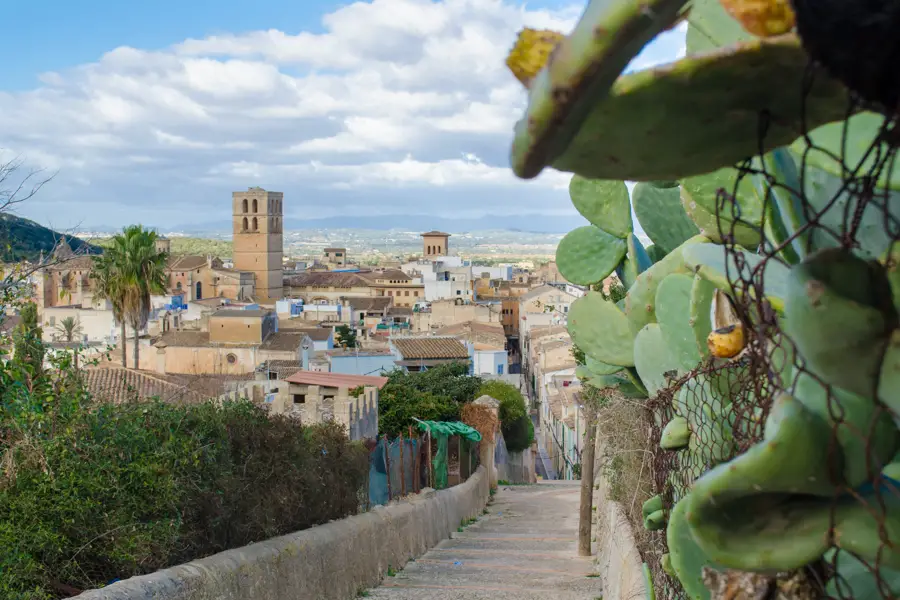
Just outside the town lies an old Marés stone quarry, which can be discovered on a short walk. You’ll also need to walk a bit to reach a small chapel on the hillside. Stations of the Cross depict the path from the church.
The Monestary of Sant Salvador
The former monastery on the hill outside of Felanitx is a very popular destination. Cyclists push themselves up the hill on their bikes. Hikers take the old pilgrim path through the forest. And families take advantage of the opportunity to drive by car to the parking lot just a few meters from the monastery.
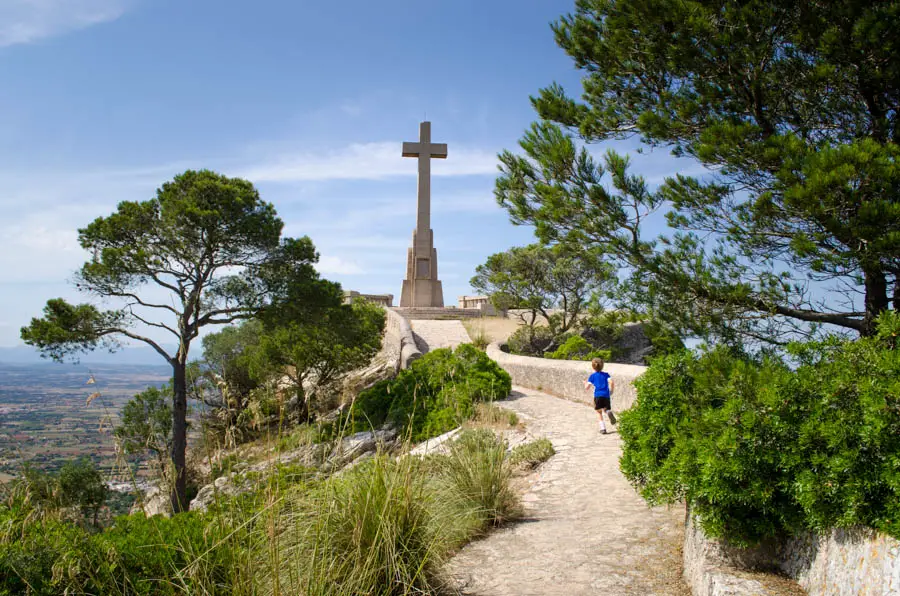
In addition to short and long walks, there is also the opportunity to picnic at the monastery. Two areas are available for this purpose, both equipped with barbecue facilities where grilling is allowed between November and May. It’s especially beautiful on the hill at the end of the day. One of the most beautiful sunsets in Mallorca can be enjoyed here. There’s a restaurant for dining and cocktails as well.
The holiday Resort Cala d’Or
Cala d’Or is purely a holiday resort and, in my opinion, can’t quite match the ancient charm of Portocolom. However, it does offer a wider selection of beaches and coves, making it worth a visit.
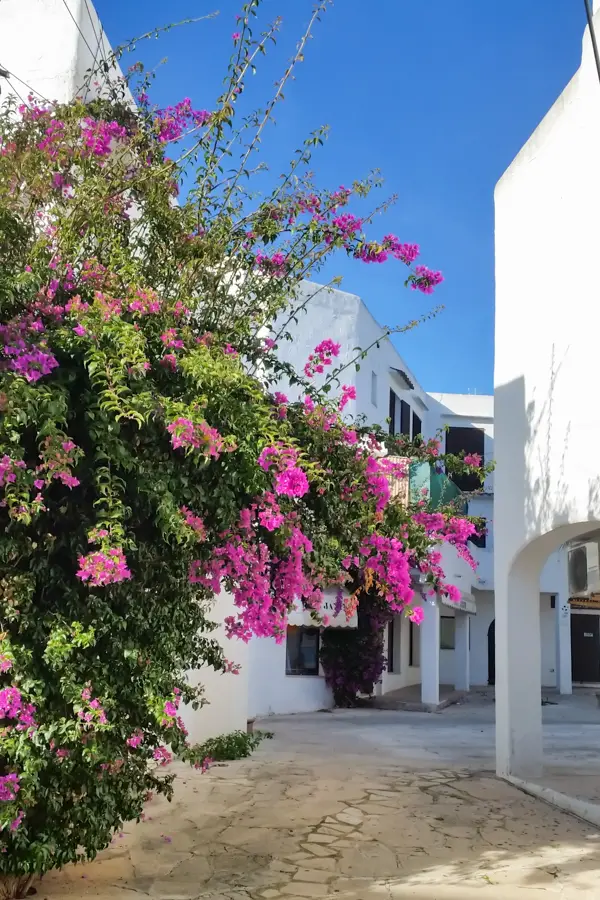
You can reach Cala d’Or by car. Alternatively, you can also use the Starfish glass-bottom boat as a shuttle. It operates several times a day between Portocolom and the beaches in Cala d’Or.
The Natural Park of Mondragó
Within the protected area of the natural park, you’ll find three almost untouched beaches, five hiking trails, and a picnic area near the sea under pine trees. Two of the beaches are serviced. At one of them, you can even rent pedal boats.
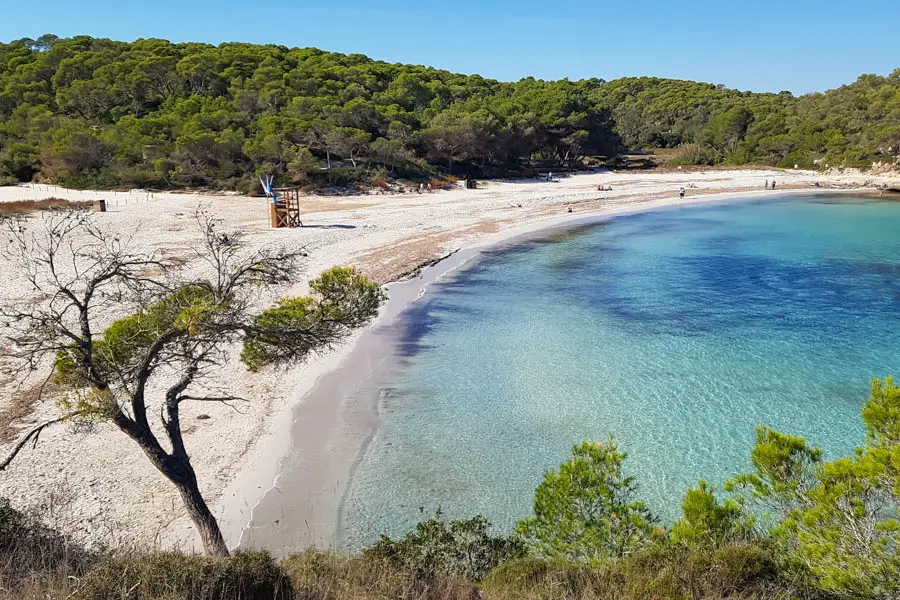
The marked trails lead along the coast to viewpoints, a lime kiln, and an old ammunition depot. Inland, you’ll find lavender fields and a small almond plantation. The routes are short and easy and can be combined with each other.
The little Town of Santanyí
And maybe you can also make a detour to Santanyí? The small town is very authentic and only overrun by tourists on market days, Wednesdays and Saturdays. In the center, there is a nice selection of restaurants and boutiques.
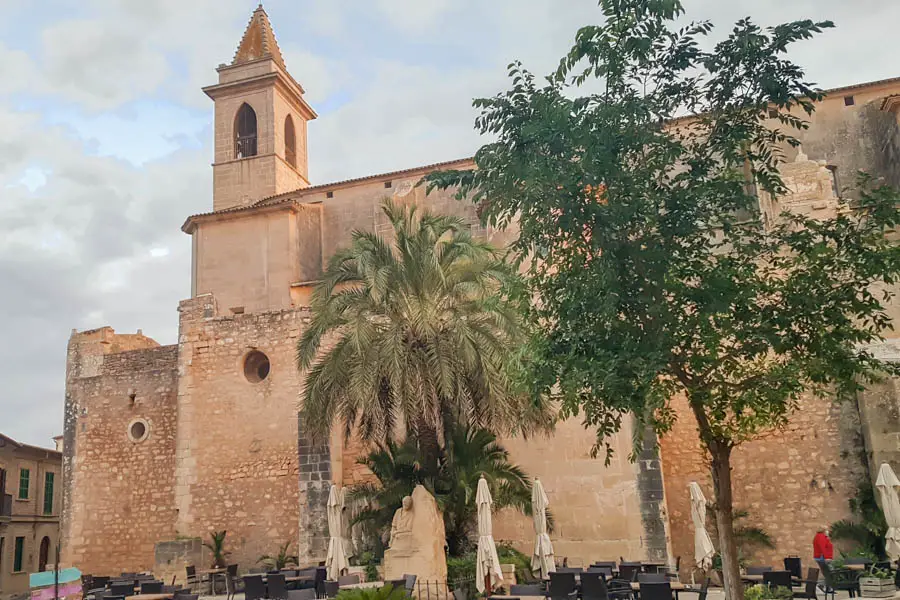
The municipal area also includes numerous beautiful beaches, including Cala Llombards and Caló des Moro. If you prefer seclusion, you’ll find it on the small hill outside the town. There lies an abandoned chapel with a metal swing and stone benches.
Read More
Want more recommendations like this? Check out more than 100 day trips and excursions on Mallorca.
Planning your holiday on Mallorca:
Book your Flight here
Great Rental Car Offers